Hong Kong has the lowest global fertility rate (0.8). Expensive private treatments, insufficient public hospital specialists and excessive waiting times discourage childless couples. Other issues include conflicts between managing a career and having children, a lack of support from employers and poor early detection of fertility problems. Li Bingcun reports from Hong Kong.
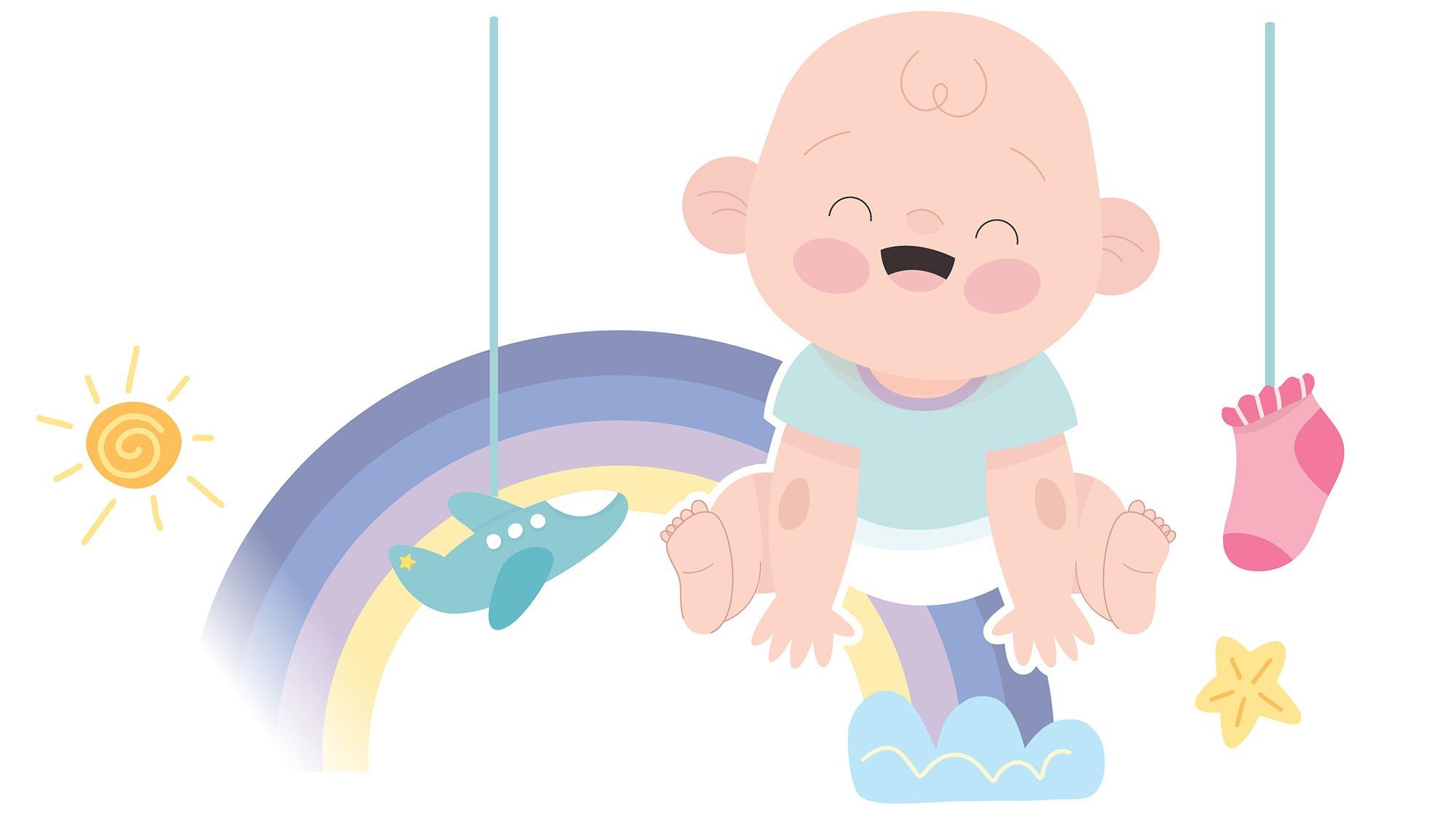
Hong Kong recorded the lowest fertility rate globally at 0.8 births per woman this year. The April 2023 World Health Organization report indicates 17.5 percent of the global adult population (one in six) are infertile. Assisted Reproductive Technology (ART) may offer a solution for childless couples.
ART covers treatments for infertility, including in-vitro fertilization (IVF) — also known as a “test-tube baby” — as the final option, after surgical and medical alternatives have been explored. British physiologist Robert Edwards’ work led to the first test-tube baby in 1978, for which he was awarded the 2010 Nobel Prize in Physiology or Medicine. IVF babies since the first was born have surpassed 8 million.
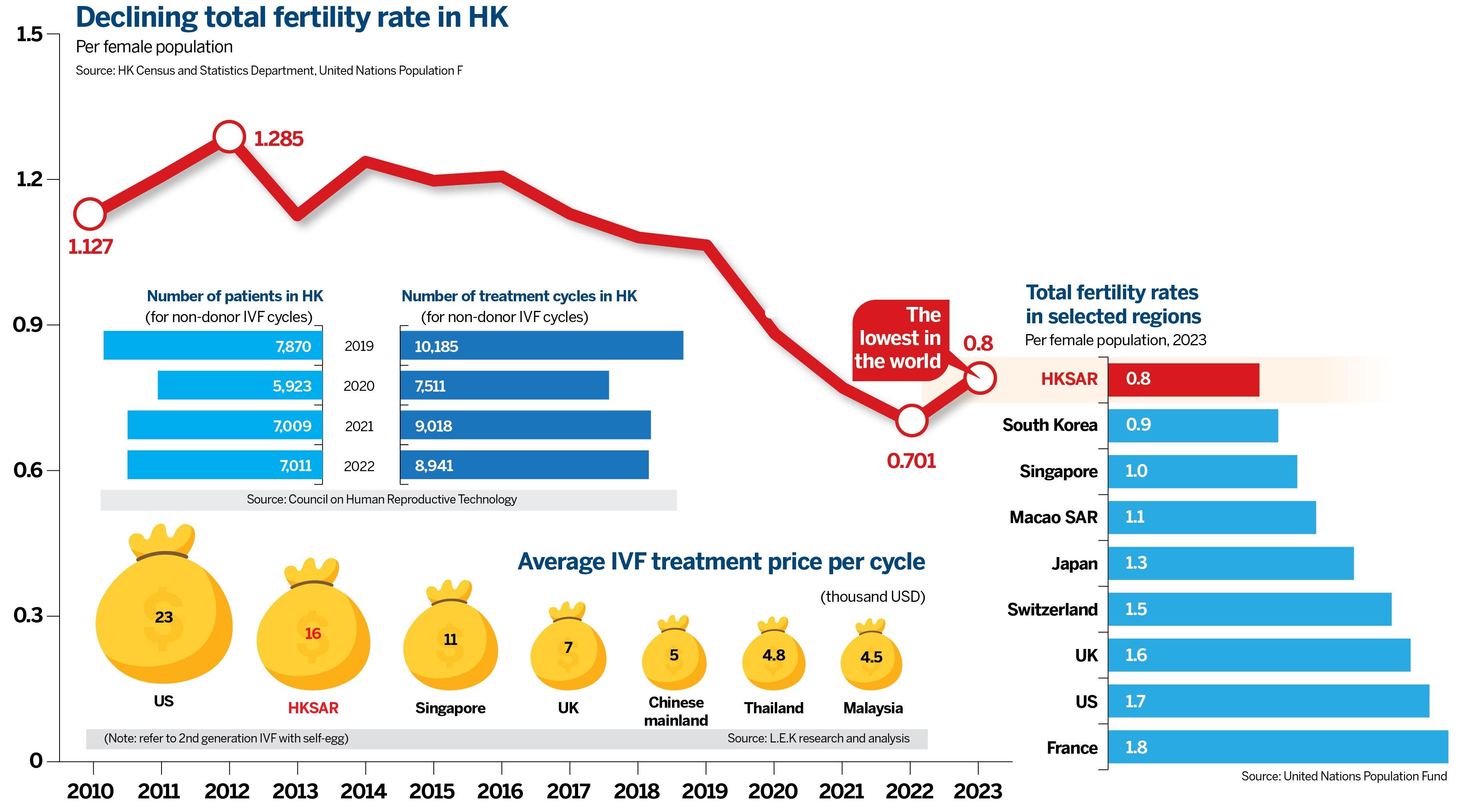 (INFOGRAPHICS: DONG KAI, MOK KWOK-CHEONG)
(INFOGRAPHICS: DONG KAI, MOK KWOK-CHEONG)
Medical poverty trap?
Success rates for ART are low and the cost is high. Solutions for the prevention, diagnosis and treatment of infertility remain underfunded and inaccessible to many. That causes distress, stigma, and financial hardship, affecting people’s mental and psychosocial well-being.
Pascale Allotey, director of Sexual and Reproductive Health and Research department at WHO, urges national governments to address public financing. “Millions of people face catastrophic healthcare costs for infertility, making this a major equity issue and a medical poverty trap for those affected,” says Pascale.

Female career conflict
Nixie Lam Lam, a 41-year-old Hong Kong lawmaker, had her first child through IVF technology in June. She married at the age of 36 and suffered three unsuccessful pregnancy cycles. She spent over HK$200,000 ($25,650) for ART to have her own baby.
“Hong Kong women continue to advance their careers after marriage at 30, but have only a few optimal fertility years left. Afterward, their reproductive capacity declines rapidly. Time is extremely limited,” says Lam.
Lam achieved success through IVF on the first attempt. Many couples invest large sums of money and time before success, or fail and give up. Lam noticed discussions on ART on forums like Baby Kingdom, which confirm many wives need such services. She recalls a female netizen after several failed ART attempts despairing, “I will not be able to have my own child in this lifetime.”
In 2022, Hong Kong women’s median age for first marriage rose to 30.7 years, and for men, it reached 32.2 years. The optimal reproductive age for both women and men is between 25 and 35.
Lo Seen-tsing, senior doctor of the Family Planning Association of Hong Kong, says many young people choose not to get married, have sex, or use contraceptives. They remain unaware of any fertility issues they may have.
Lo adds that bad lifestyle habits, like smoking and drinking, exposure to air pollution, and chemical additives like plasticizers, can all impair the quality of sperm and eggs. Of the multiple causes of infertility, 22.2 percent are attributed solely to male factors and 6.4 percent solely to female factors.
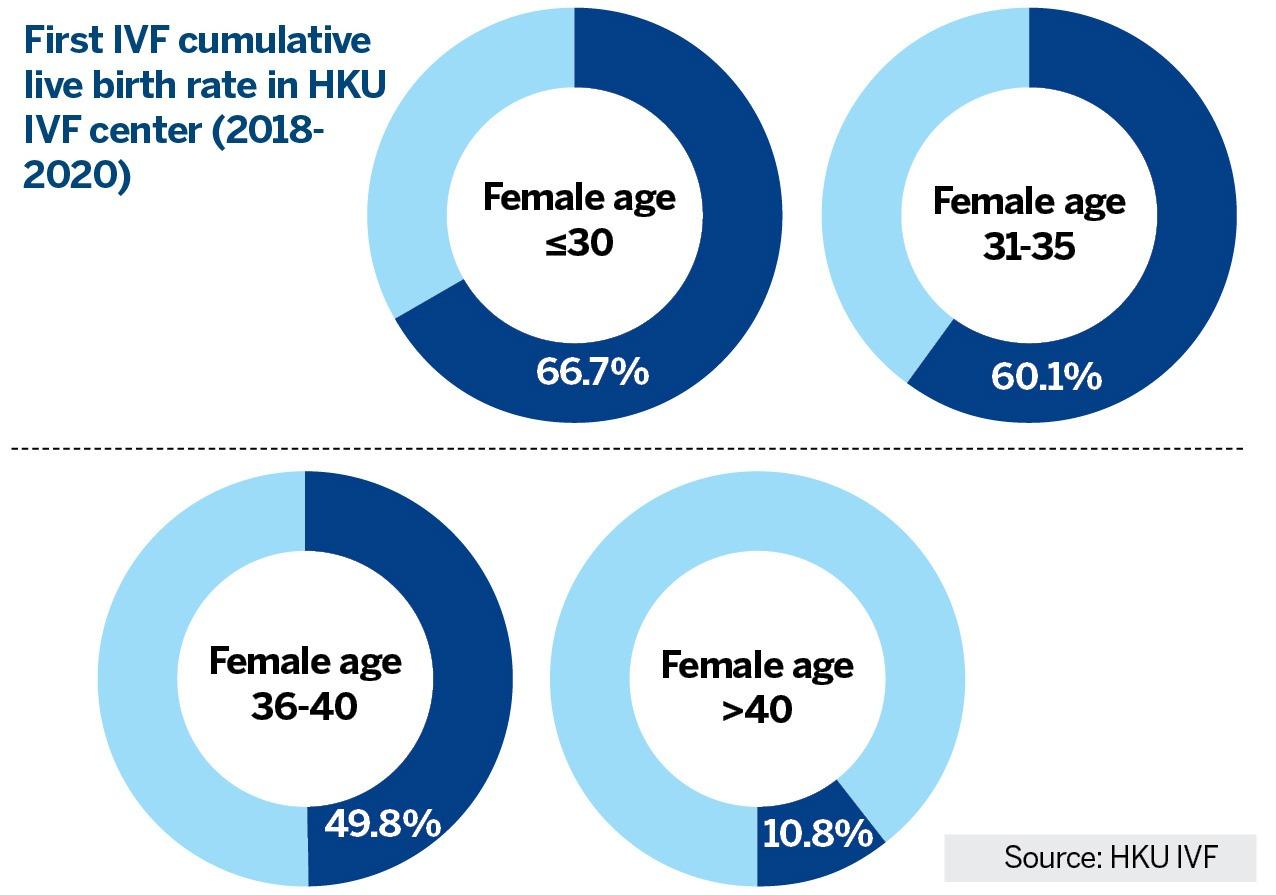
Easily discouraged
A University of Hong Kong survey of patients undergoing ART programs, shows that if the treatments don’t yield results midway, 39 percent of women experience anxiety and 18 percent suffer symptoms of depression. Additionally, about 77 percent of couples discontinue treatment.
Lo says that women experience more physical pain in the process, while men suffer heavy psychological pressure, with erectile dysfunction more severe during treatment. She cautions against high expectations of ART treatments, as such a results-oriented mindset can negatively impact family relationships.
According to surveys, only 8.7 percent of Hong Kong’s infertile couples undergo ART treatments, which is significantly lower compared with the US and some European countries where the rate is approximately 15 percent.
Milton Leong Ka-hong, a private specialist in reproductive medicine who delivered Hong Kong’s first test tube baby in the 1980s, attributes this to the high costs in the private sector, lengthy waiting times in the public sector, and stringent regulations. The rising trend in choosing not to have children, and the lack of employer support, aggravates the situation.
In 2022, about 7,000 Hong Kong patients received IVF treatment, mostly in private institutions. The majority of the patients fell within the 36-40 age range. The city has 24 licensed private institutions offering ART services. Nine public hospitals also provide ART services, but IVF is only available in three.
In April, the waiting time for couples receiving subfertility assessments in public hospitals was 7.5-12 months after referral. Waiting times for couples in need of IVF treatment are about four to seven months, after the first IVF consultation.
Although the waiting time has been reduced compared to last year, it can still be agonizing for those who have missed their prime reproductive years. Many who can’t wait can only choose expensive private institutions. In neighboring Shenzhen, patients can directly consult public doctors and start treatment after finishing related checks.
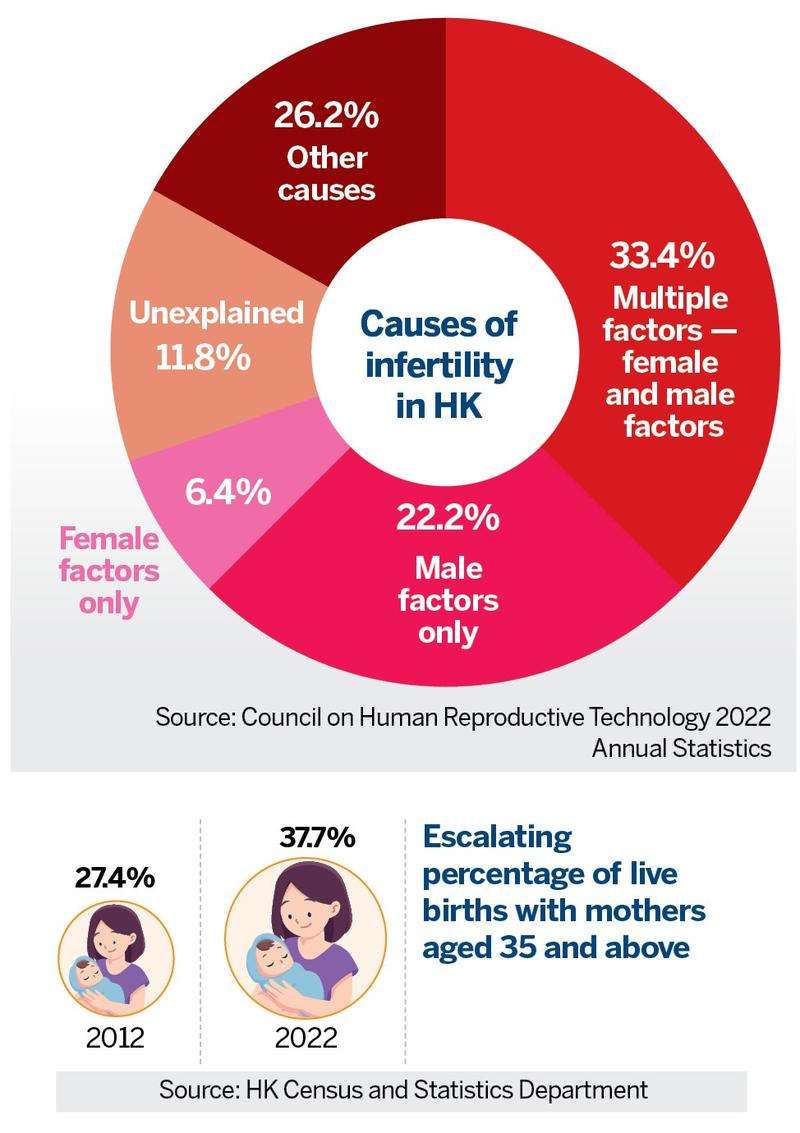
Cross-border options
Costing at least HK$80,000 per treatment cycle, IVF prices in Hong Kong’s private hospitals are above those in nearby regions like Singapore, Thailand, Taiwan, and the Chinese mainland. Gender selection is not permitted in Hong Kong through IVF, and the unmarried are not allowed the procedure.
Nearly one in six women with infertility problems in Hong Kong have accessed cross-border reproductive care, and more than one-third plan to use or would consider it, according to a 2020 HKU survey.
Leong says cost and waiting times have discouraged local infertile couples from seeking treatment, despite the city’s world-class ART services. That has also impeded the city’s fertility industry and its long-term competitiveness.
Ernest Ng Hung-yu, clinical professor at the Centre of Assisted Reproduction and Embryology, the University of Hong Kong-Queen Mary Hospital, says that in the past three decades, residents’ awareness of ART services has increased with growing service volume.
Yet the average age of patients undergoing treatment has been increasing, which reduces the success rate. The challenging economic situation, with unemployment and reduced incomes, further inhibits willingness to seek infertility treatment.
Ng believes that offering more ART services will have limited impact on the city’s birth rate, in view of the proportion of infertile people, the reluctance to have children and the limited success rate of treatment. Yet for patients’ well-being, society should take measures to shorten the treatment period and reduce waiting times. “It’s crucial to increase the accessibility, affordability, and coverage of these services,” he adds.
Currently, public hospitals only provide ART services to females under 40 with no children. Ng believes that the age threshold could be raised, and services could be offered to mature women and those with children. More staff for consultations, embryo incubation and counseling are needed to increase service capacity and shorten the queues.
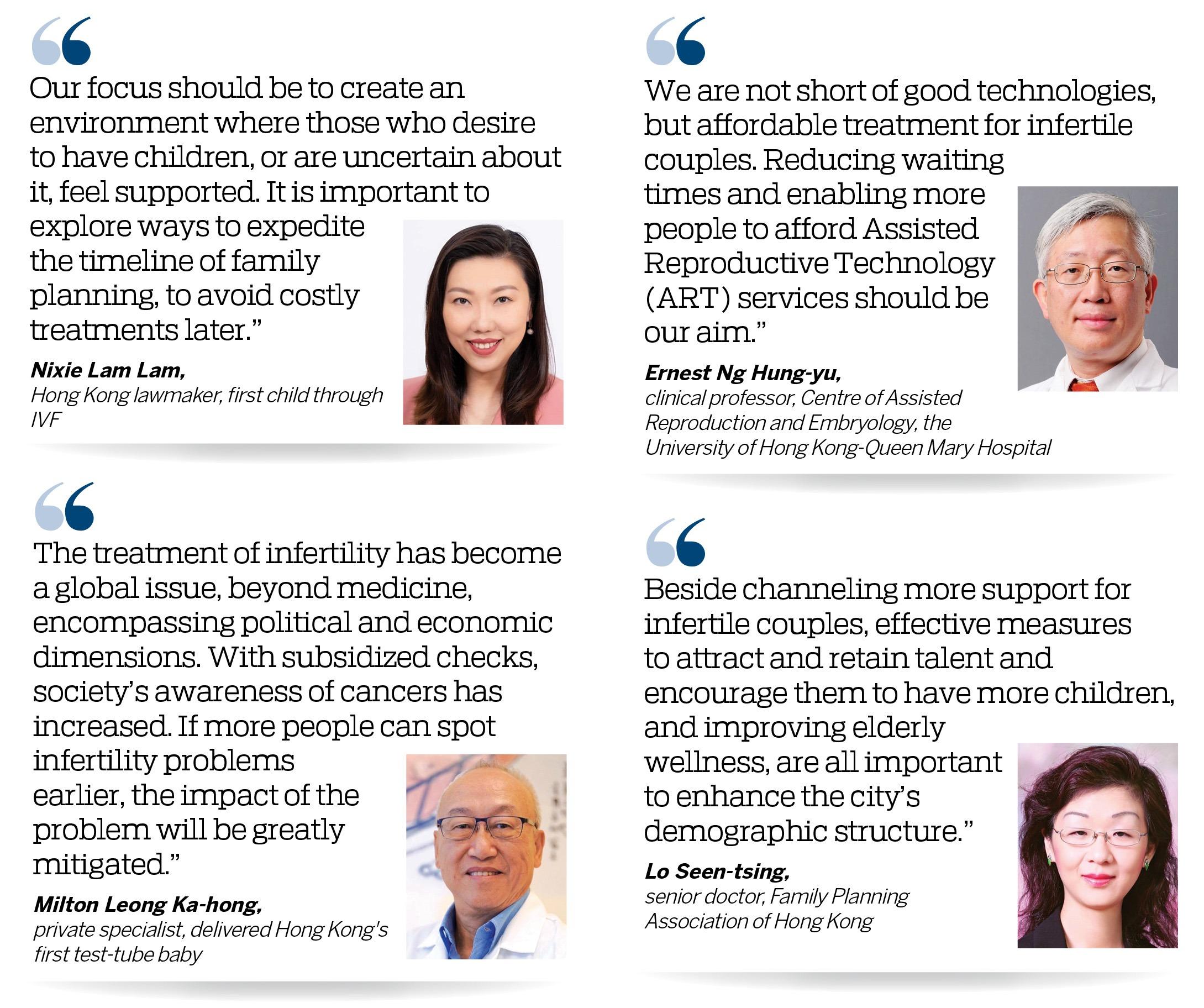
Expand ART in public care
He thinks the treatment cycles at three public hospitals with ART services could be raised from 1,000 to 2,000 per year. Having one more medical officer at a public hospital could mean offering an extra 200 cycles of IVF treatments a year, says Ng.
To revive the birth rate, Hong Kong Chief Executive John Lee Ka-chiu announced a slew of policies in October, including increasing the ART services quota in the public healthcare sector, and offering tax deductions for expenses.
Lam says that the new measures may alleviate some of the pressures couples struggling to conceive may feel, but there is still a lot more that can be done. She and Leong suggest the government strengthens promotion and subsidies on fertility checks, to help residents understand reproductive health early.
With the government’s efforts, public awareness of diseases such as breast cancer, colorectal cancer, and cervical cancer has significantly increased. Infertility, due to its profound impact on families, deserves greater attention and support, Leong says.
National programs
Leong also hopes more subsidies can be offered to reduce the expense of ART services, adding that many countries and regions offer significant public funding support.
Mainland medical authorities proposed recently that local governments should include ART services in medical insurance systems. From 2023, Beijing and Guangxi Zhuang Autonomous Region are partially covering ART services in their public medical insurance. Hangzhou includes it in a commercial insurance, offering up to a 3,000-yuan reimbursement for each buyer. IVF services cost over 30,000 yuan per treatment cycle on the mainland.
Globally, some countries — such as Denmark, France, Spain and Israel — fully or mostly cover residents’ ART expenses. In America, many states require employers to provide insurance coverage for employees’ ART services.
Leong adds that many patients face difficulties in choosing private doctors for ART, and have few channels to get related information. He hopes the city will offer more guidance and employees can enjoy more support from enterprises.
Japan provides financial support for counseling, promotion of ART and training for medical practitioners. Counseling includes consideration of the health condition of couples and how they can balance work with their treatment. The country also gives recognition to companies supporting employees receiving infertility treatment. Some large companies offer special leave and subsidies for such treatment.
Hong Kong’s first Chinese Medicine Hospital, expected to commence operations in 2025, will offer programs on infertility, prenatal and postpartum care. Given TCM’s effectiveness, Lam advises IVF centers to strengthen collaboration with TCM clinics.
She stresses that procreation is a fundamental human right. The government previously avoided intervening in people’s personal choices, but providing support to those in need is assistance, rather than interference, counters Lam.
“Instead of urging those who do not wish to have children to do so, it would be much more effective to assist those who are longing for parenthood,” says Lam.
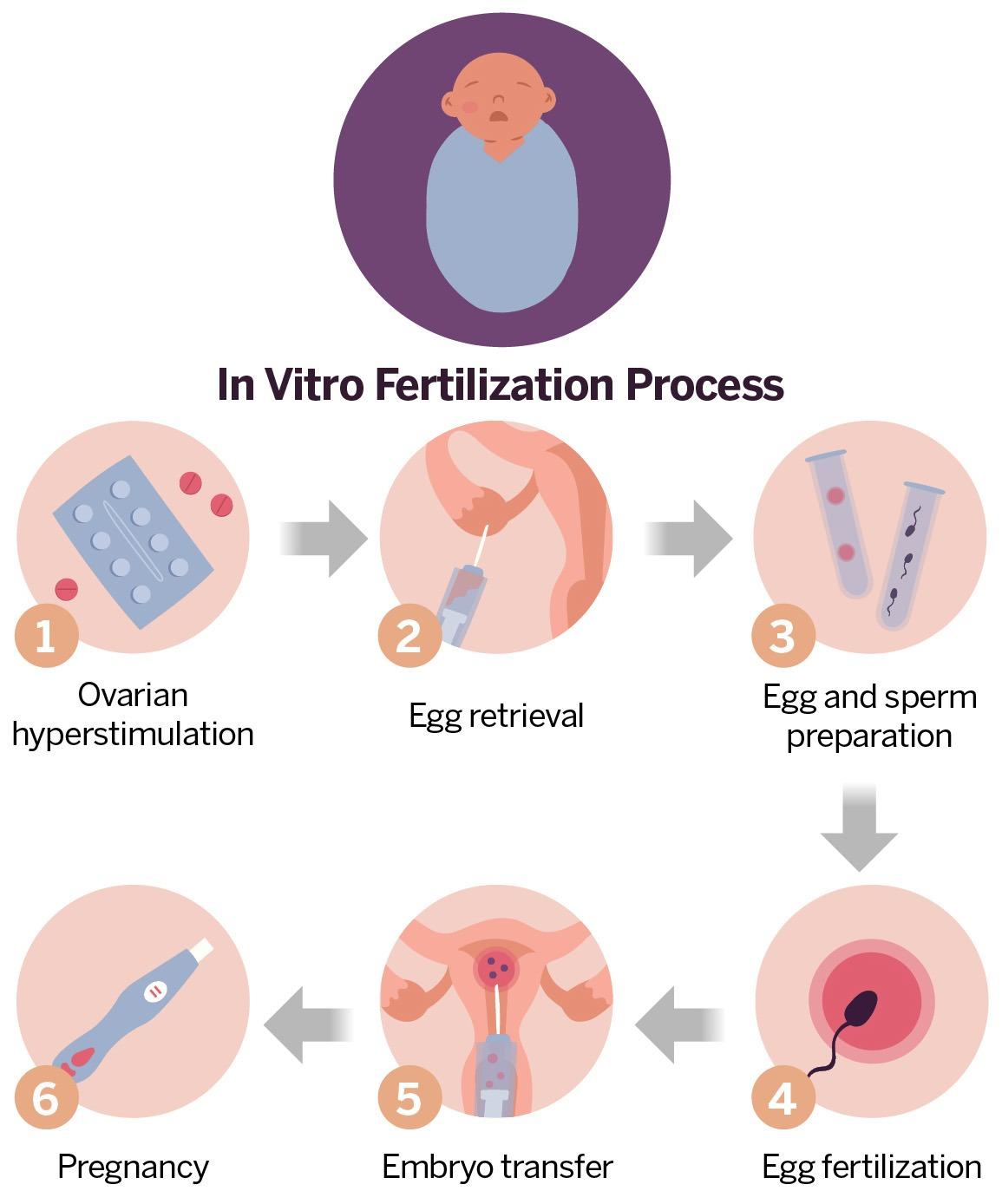
Reporter’s log: Best gift at 30
I feared I could not bear children. Fortunately, IVF technology has enabled my pregnancy at age 30. I expect to caress my baby around the Spring Festival in February.
From the faint gray traces on the pregnancy test strip, to a seven-month fetus, life is steadily flourishing within me. The baby kicks, moves, and swims in my womb. I’m so eager to welcome its birth.
My husband and I were diagnosed with chromosomal defects. IVF was the best option, as it can screen the embryo for defects, which may otherwise cause diseases.
I underwent egg retrieval, embryo cultivation, two rounds of embryo screening, and cervical-polyp removal surgery. It took almost two years to finally transfer the embryo into my body.
We chose a Shenzhen public hospital near home for treatment. It cost about 100,000 yuan ($14,000) prior to pregnancy — much more expensive than other IVF types — for the embryo screening.
Throughout the process, I always worried about the worst outcome. Whenever any indicator was not good, I was engulfed in immense anxiety.
It evoked a dread of loss in me; should any step have failed, I would have to start over again.
For me it’s a lonely battle, and even my husband can’t help a lot. Having invested so much time and money, the potential consequences of failure would be incredibly challenging to endure.
In the women’s IVF support group, many resigned from their careers to focus on the process. Some incurred expenses of over 1 million yuan for a child. They so badly want to conceive.
Currently, almost all of the IVF expenses are not subsidized, and there are limited medical services to alleviate the psychological pressure patients are under. Any additional assistance, whether financial or psychological support, would be greatly beneficial.
Those who have undergone IVF often describe being pregnant as “winning the lottery”. Having a child is not a must for everyone, but it still means a lot to many.
What's next
1. Subsidize fertility checks to spot problems earlier.
2. Add ART-related public hospital staff to cut waiting times.
3. Provide effective subsidies to infertile couples for ART services.
4. Encourage support from companies for employees seeking treatment.
5. Collaborate with TCM clinics on infertility treatment.
Contact the writer at bingcun@chinadailyhk.com


